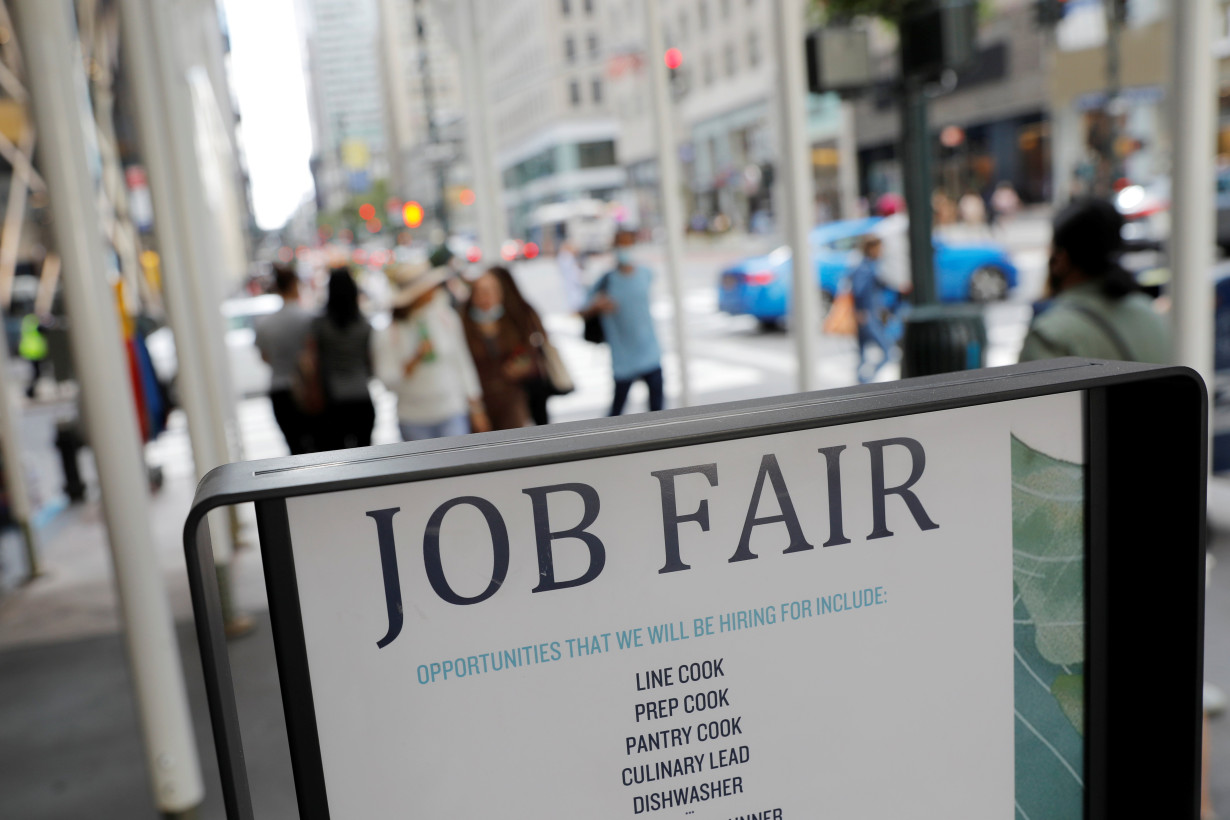WASHINGTON (Reuters) - The number of Americans filing new applications for unemployment benefits slipped last week, while the jobless rate appeared to have held steady in March.
Initial claims for state unemployment benefits fell 1,000 to a seasonally adjusted 224,000 for the week ended March 22, the Labor Department said on Thursday. Economists polled by Reuters had forecast 225,000 claims for the latest week.
The government revised the claims data from 2020 through 2024, in line with the normal practise. New seasonal factors, the model that it uses to strip out seasonal fluctuations from the data, were introduced for 2025.
Seasonal factors for 2020 through 2024 were also revised.
Low layoffs have blunted the impact of a sharp moderation in hiring, keeping the labor market on a solid footing and the economic expansion on track. But President Donald Trump'saggressive trade policy and an ambitious campaign to drastically downsize the federal government through deep spending cuts and mass firings have cast a pall over the economy.
While there has been no significant pick up in filings for unemployment compensation by federal workers, claims in the Washington D.C. metropolitan area, which include parts of neighboring Maryland and Virginia, have risen.
These most likely reflect layoffs of contractors and others who dependent on government funding. Tech billionaire Elon Musk's Department of Government Efficiency, or DOGE, has fired thousands of federal workers, many of whom have been ordered reinstated by courts. Some have been put on administrative leave, which does not allow them to file for benefits.
The number of people receiving benefits after an initial week of aid, a proxy for hiring, decreased 25,000 to a seasonally adjusted 1.856 million during the week ending March 15, the claims report showed.
The so-called continuing claims data was also revised from 2020 through 2024. Seasonal factors were also revised for that period and new ones introduced for 2025.
Continuing claims data covered the week during which the government surveyed households for March's unemployment rate.
With a Conference Board survey on Tuesday showing a mild improvement in consumers' perceptions of the labor market in March, economists expect the unemployment rate to hold steady at 4.1% this month.
(Reporting by Lucia Mutikani; Editing by Chizu Nomiyama)

 Trump has begun another trade war. Here's a timeline of how we got here
Trump has begun another trade war. Here's a timeline of how we got here
 Canada's leader laments lost friendship with US in town that sheltered stranded Americans after 9/11
Canada's leader laments lost friendship with US in town that sheltered stranded Americans after 9/11
 Chinese EV giant BYD's fourth-quarter profit leaps 73%
Chinese EV giant BYD's fourth-quarter profit leaps 73%
 You're an American in another land? Prepare to talk about the why and how of Trump 2.0
You're an American in another land? Prepare to talk about the why and how of Trump 2.0
 Chalk talk: Star power, top teams and No. 5 seeds headline the women's March Madness Sweet 16
Chalk talk: Star power, top teams and No. 5 seeds headline the women's March Madness Sweet 16
 Purdue returns to Sweet 16 with 76-62 win over McNeese in March Madness
Purdue returns to Sweet 16 with 76-62 win over McNeese in March Madness








